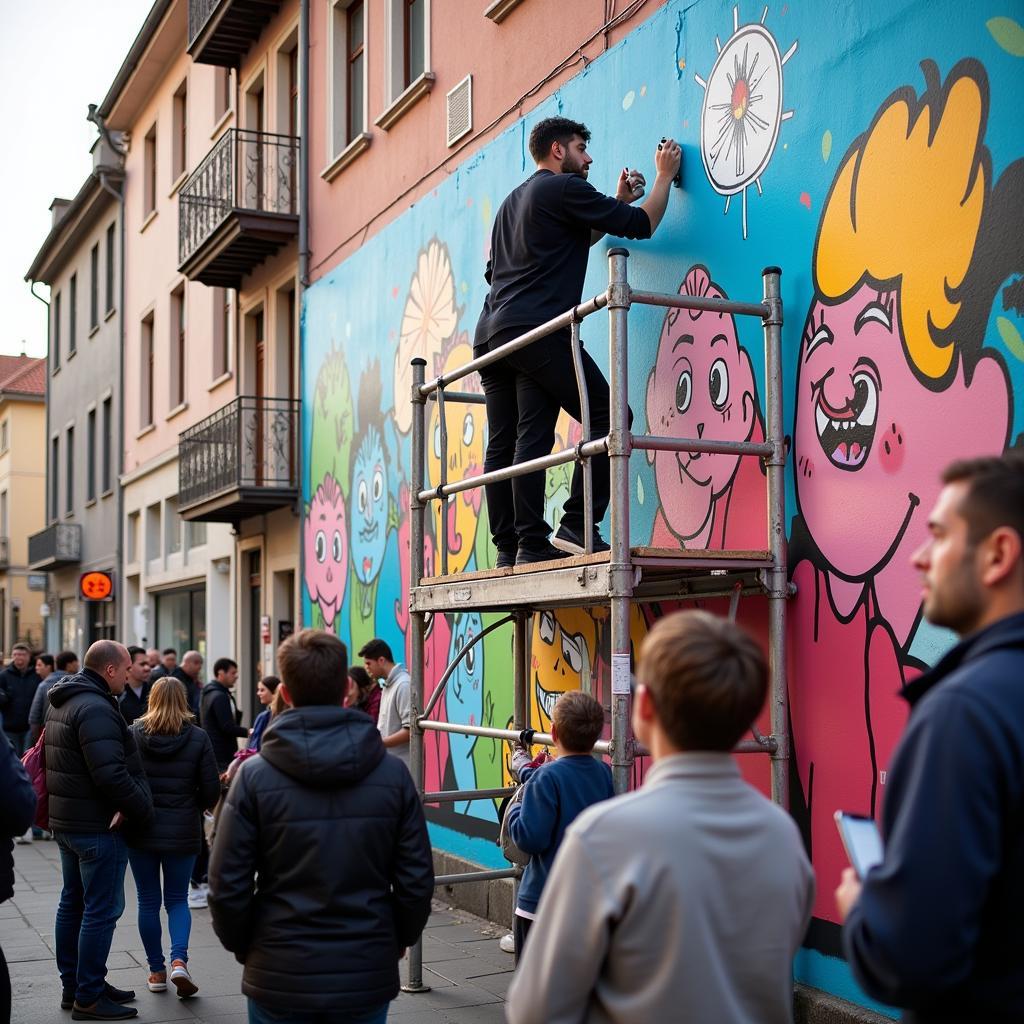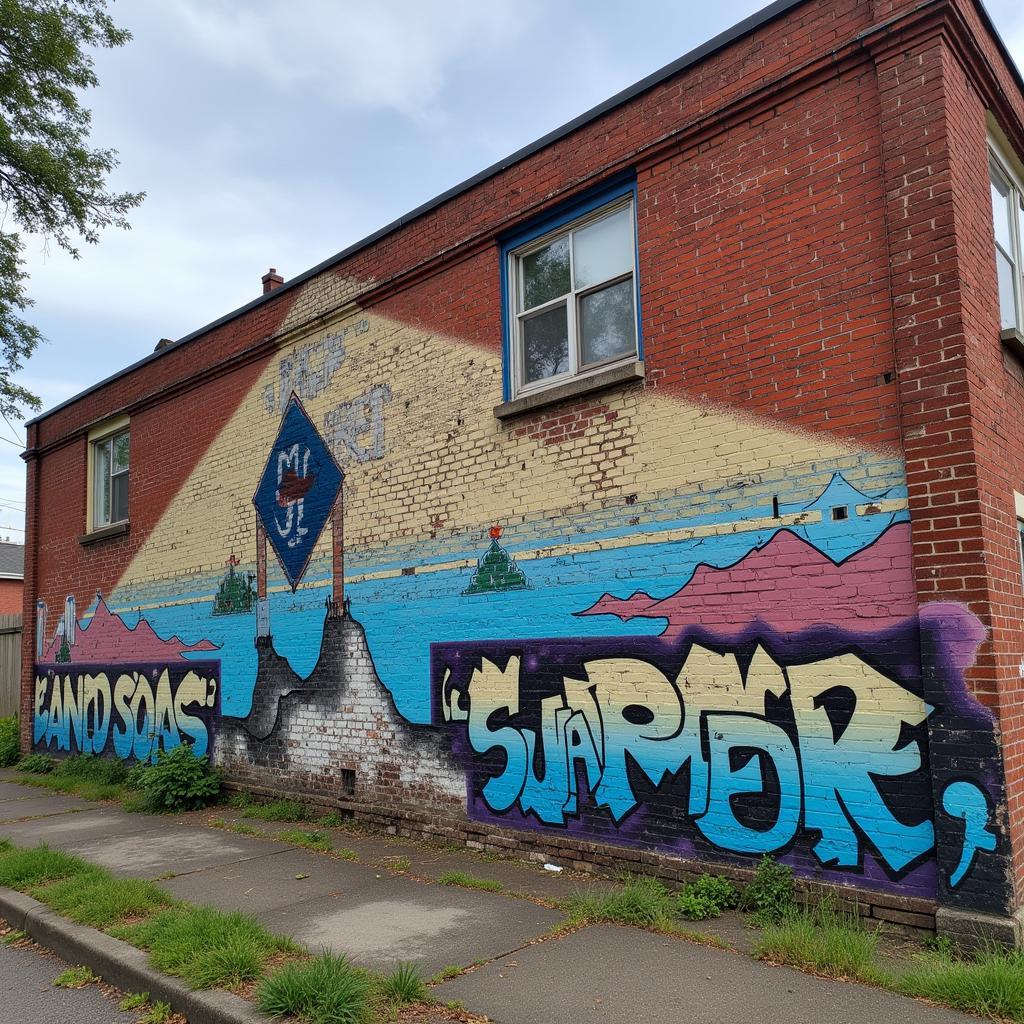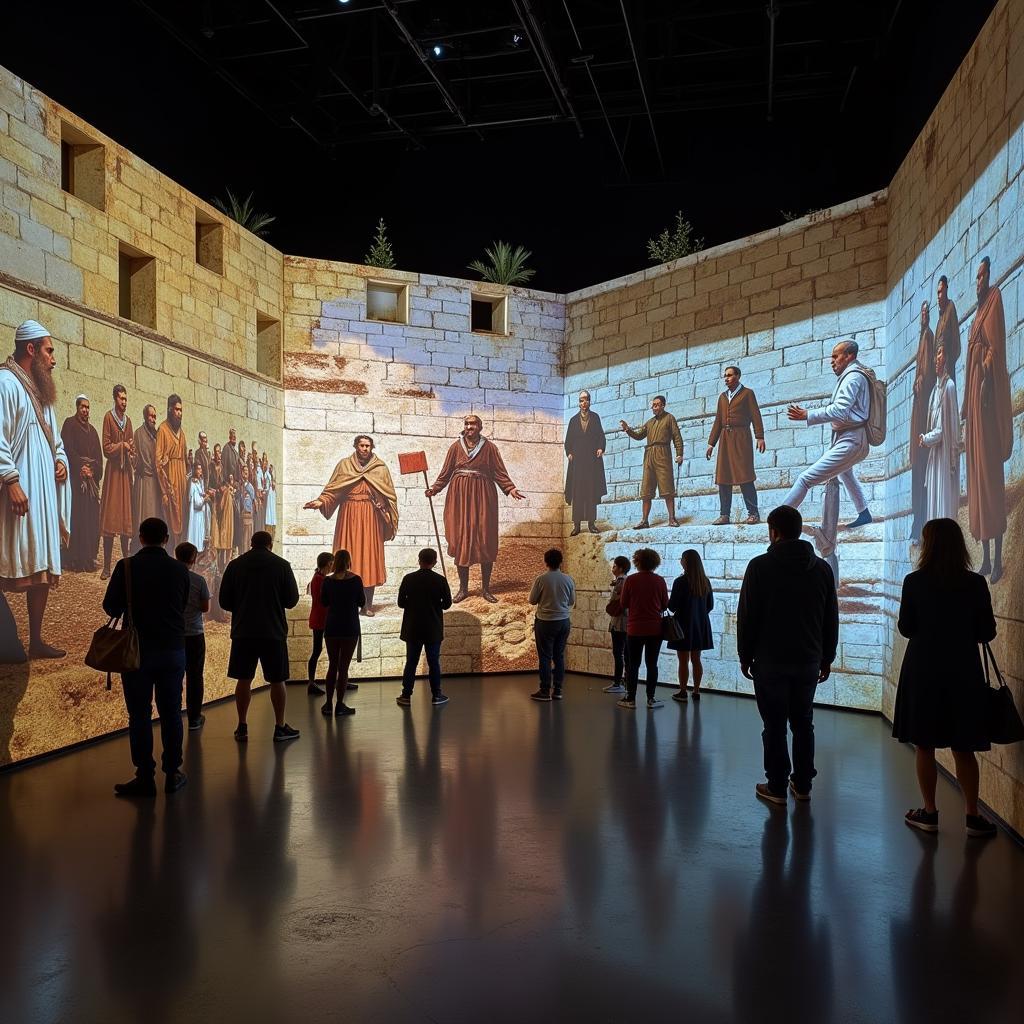Are Murals Performance Art? Exploring the Intersection of Street Art and Live Action
Murals, those vibrant expressions of creativity splashed across public spaces, have long sparked debate about their artistic classification. Are they simply large-scale paintings, or do they transcend the traditional canvas to become something more akin to performance art? The lines begin to blur when we consider the dynamic process of mural creation and its engagement with the public sphere.
The Case for Murals as Performance: Beyond the Painted Surface
Unlike paintings confined within the walls of a gallery, murals inherently interact with their environment. The act of creation itself, often unfolding over days or even weeks, becomes a spectacle.  Street artist creating a large-scale mural The artist, perched atop scaffolding, engages in a physical dance with the wall, their movements bold and deliberate. This public display, set against the backdrop of urban life, transforms the artistic process into a captivating performance.
Street artist creating a large-scale mural The artist, perched atop scaffolding, engages in a physical dance with the wall, their movements bold and deliberate. This public display, set against the backdrop of urban life, transforms the artistic process into a captivating performance.
Furthermore, the impact of a mural extends beyond its visual allure. Murals have the power to ignite dialogue, challenge perspectives, and inspire social change. They become platforms for community engagement, reflecting the stories, struggles, and aspirations of the people who live and breathe in their presence. This interactive dimension, where the art sparks conversations and influences its surroundings, aligns with the essence of performance art.
Ephemerality and Audience Engagement: Parallels Between Murals and Performance
Performance art, by its very nature, is fleeting and impermanent. Similarly, murals are exposed to the elements, vulnerable to vandalism, and subject to the ever-changing urban landscape.  Faded mural on a brick wall showing the effects of time This ephemeral quality, shared by both art forms, contributes to their raw authenticity and their ability to capture a specific moment in time.
Faded mural on a brick wall showing the effects of time This ephemeral quality, shared by both art forms, contributes to their raw authenticity and their ability to capture a specific moment in time.
Moreover, both murals and performance art rely on audience engagement to fully realize their meaning. A performance without an audience is merely a rehearsal, and a mural hidden from view loses its power to communicate. The reactions, interpretations, and dialogues sparked by these art forms are integral to their existence.
Blurring the Lines: When Murals Become Stages for Live Action
The intersection of murals and performance art becomes even more apparent when artists intentionally integrate live elements into their work. Imagine a mural depicting a bustling city scene, where dancers suddenly emerge from the painted crowd, bringing the artwork to life through movement and music. This fusion of visual and performance art creates a multi-sensory experience, amplifying the emotional impact and blurring the lines between observer and participant.
“When we bring a mural to life through performance, we invite the audience to step inside the artwork,” says renowned street artist and performer, Anya Volkov. “The mural becomes a stage, and the viewers become active participants in the creative dialogue.”
Conclusion: Embracing the Dynamic Nature of Murals
While the debate surrounding the classification of murals may continue, one thing remains certain: murals possess a unique power to transform public spaces, ignite social commentary, and connect with audiences on a visceral level. Whether we view them as large-scale paintings, performance art, or a hybrid of both, their impact on our urban environments and our collective consciousness is undeniable. So, the next time you encounter a mural adorning a city wall, take a moment to appreciate the artistry beyond the painted surface and consider the ways in which it might be a performance waiting to unfold.
Need help with your next creative project? Contact us!
Phone Number: +84 24 6257 3573
Email: [email protected]
Address: Savico Megamall, 7-9 Đ. Nguyễn Văn Linh, Gia Thụy, Long Biên, Hà Nội 10000, Việt Nam.
We have a 24/7 customer support team!





